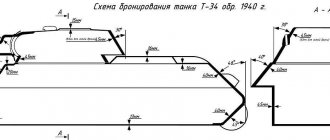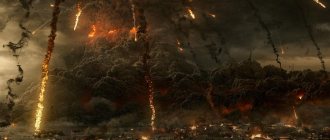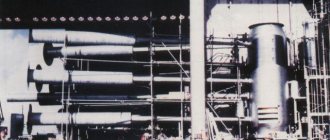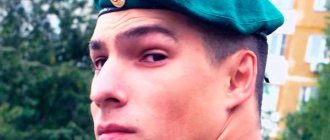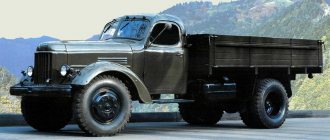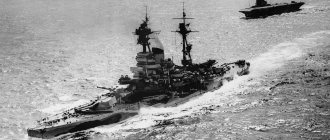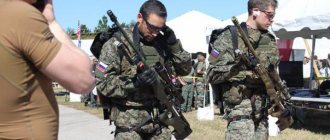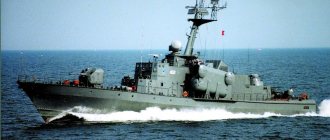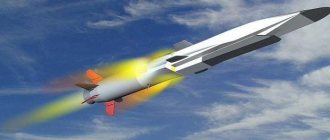Protection: helmet and armor
“And bullets are whistling, bullets,” was sung in one famous song, and for good reason.
The work of a fighter involves risk to life, and this life must be protected as long as possible. After all, the completion of the mission at least depends on this. Today, special armored vests and helmets provide protection to special forces all over the world.
The design of the Plate carrier is quite simple: these are two covers made of thick nylon fabric (cordura) connected by shoulder and side straps, into which specially shaped plates are inserted.
Each country is trying to come up with something different in terms of the type and composition of the plates, but the most widespread format in the world today is the American SAPI. Many commercial companies make body armor tailored to its size. This means that a fighter will always find the necessary protection for any required task. If you want pure armor, get it. If you want to attach a collar and groin protection to it, please do. If you want PALS (Pouch Attachment Ladder System, better known as MOLLE - MOdular Lightweight Load-carrying Equipment) straps on top for attaching additional pouches, nothing could be simpler.
(Photo: Vitaly Kuzmin)
By the way, the presence of the MOLLE system or its variations on the body armor cover is now almost mandatory.
Well, where else could a special forces soldier hang pouches with magazines, a hydration pack with water, or his favorite cat patches? No, no, without this they won’t buy your products.
With helmets the situation is even more complicated. Even the most enlightened user will get confused in their diversity. Some units use lightweight head protection to make parachuting more comfortable. For others, give a helmet of almost the fifth or sixth class of protection, capable of holding a machine gun bullet - after all, they have to storm a house in which bad guys have settled, not burdened with morality and not willing to surrender.
(Photo: Vitaly Kuzmin)
But on any helmet you will see a mount for additional equipment: NVD (night vision device), active headphones, IR markers (to determine “friend or foe”) and other terribly secret and expensive equipment. Oh, and cat patches, yes.
New special forces uniform from Yudashkin
In 2007, the Fashion House of V. Yudashkin, together with the Central Research Institute of the Garment Industry, developed a new uniform for the Russian special forces of the Ministry of Internal Affairs from camouflage mixed fabric consisting of 50% polyester and 50% cotton.
The set includes a jacket and trousers. Jacket with 2 shoulder and 2 chest pockets. There is an internal pocket. Shoulder straps (one each on the left shoulder and chest) are easy to put on and take off if necessary. Cuffs, shoulder straps and pockets are fastened with Velcro fasteners.
The trousers have 2 patch pockets on the sides and back, 2 side welt pockets. There is a special pocket for storing your personal badge. There are belt loops on the trouser waistband for a belt. A special knee insert with Velcro acts as additional protection if a seal is inserted into it. There are straps sewn to the bottom of the trousers for ease of putting the boots on the trouser legs.
Thus, with all the variety of materials, colors and designs, the field uniform of the special forces of Russia, the USA and Ukraine has a number of common features. This is the use of camouflage to camouflage from the enemy and the presence of a large number of pockets, drawstrings and fasteners for maximum functionality.
Video: FSB special forces
2.Weapons with additional equipment
Without weapons, it will be difficult for a special forces soldier to complete the assigned task. It's downright incredibly difficult. But it is possible. However, the father-commanders are kind enough and allow you to take on a mission the most convenient weapon for a soldier. For some, of course, a knife and a bow will do... but the days of John Rambo are over. Modern means of bringing democracy and enforcing peace are now in fashion.
The main firearm of a special forces soldier is usually very different in appearance from a standard motorized rifle machine gun. Here you will find rails for installing additional equipment (laser sight, flashlight, under-barrel grenade launcher, bipod, front grips...), and a special silencer, and a sophisticated sight (optical, holographic, collimator...), and a folding stock.
(Photo: Caliber)
In general, if you see a very scary and incomprehensible machine gun, most likely it belongs to a special forces soldier, and there is no need to touch it. Otherwise it will hurt.
Distribution in the USSR Armed Forces
In 1967, an updated uniform was adopted for the Airborne Forces. Famous Soviet artist A.B. Zhuk submitted a proposal for consideration by General V.F. Margelov to use crimson hats as an attribute of paratroopers, referring to the use of such hats in other countries of the world. The commander agreed and the beret was approved. For privates and sergeants, there was an emblem in the form of an asterisk, which was attached to the front center of the beret, and on the right was a blue flag, and for officers a cockade was provided.
A year later, a blue beret was adopted for paratroopers, since the leadership considered that it more symbolizes the color of the sky. As for the Marine Corps, the color black was approved for this type of troops. Black berets were also used by tank crews, but not as the main gear, but during maintenance and repair of equipment to protect their heads from dirt.
Medical pouch
Do you know what special forces are taught almost as intensely as how to shoot? Providing first aid on the battlefield. Each squad member must be able to save the life of his comrade: stop the bleeding, apply a bandage, prepare the wounded for evacuation, and most importantly, not kill him in the process of these manipulations.
So a medical pouch (indicated by a cross) is an important component of the equipment of any special forces soldier. At a minimum, it contains a hemostatic tourniquet (the so-called tourniquet - now the most common system in the world is called CAT). Usually they carry at least two or three of them: one in a pocket on the hand, another in a pocket on the leg, and the third in a pouch. The second number in the first aid kit are hemostatic agents: Cellox, Hemostop and the like. They allow the blood to clot faster so that the wounded person has a better chance of not dying from blood loss. Bandages used to seal wounds are often impregnated with such agents. Well, and painkillers, which temporarily block the pain shock caused by the injury.
(Photo: Vitaly Kuzmin)
All this - and much more - is packed into a special pouch and hung on the equipment so that it can be quickly used in a critical situation.
However, one of the unshakable rules of providing assistance on the battlefield is: “Use the first aid kit of a wounded soldier first.” After all, yours may be useful to someone else.
What is the Russian Guard?
The Russian Guard is an executive body. It was created in 2016 on the basis of the Russian internal troops.
The main specifics of the service do not require equipment or special weapons. The issue of changing clothes was raised simultaneously with the creation of the Russian Guard.
It included departments of police units and private security.
So army and police special forces perform different tasks, but at the same time closely interact with each other. The form satisfies the specifics of the activities of each department.
The Russian Guard has the right to license certain types of activities, they are related to security activities. Forceful actions will also be carried out, as the Russian Guard will monitor the readiness of troops in peacetime and wartime
. The powers of the body are quite extensive, since the Russian Guard can develop uniforms for training in professional institutions.
The authority may have access to the requested information of authorities, organizations and associations. It can stop the use of networks and communications. The Russian Guard has the right to organize an examination, but only in those activities that are assigned to it. Based on established documents, the body is the highest among the military, and it has the right to exercise two of the three branches of government.
Main functions:
- Work with the internal affairs bodies of the Russian Federation;
- Maintaining public order;
- Ensuring security and emergency conditions;
- Ensuring the legal regime;
- Fight against terrorism and extremism;
- Security of important government cargo;
- Supervision of compliance with legislation in the field of arms trafficking;
- Protection of private activities.
The military can check documents and make arrests. If an emergency occurs, employees have the right to prohibit the movement of pedestrians and use citizens' vehicles to travel to the scene of the situation. It is prohibited to use weapons against pregnant women and persons with disabilities.
The Russian Guard has the authority to control the actions of the National Guard. However, the authority's sphere of influence is broader. The body itself is legislative, but is endowed with the right to introduce new laws in areas that are under its control, namely:
- Activities of the National Guard;
- Prevention of administrative offenses;
- Security of cargo and strategically important objects;
- Protection of private property.
What does it contain?
- Internal troops of the Ministry of Internal Affairs;
- Special Forces Response Center;
- Rapid Response Squad;
- Mobile detachment;
- Aviation Special Purpose Center;
- Management body for organizing licensing and permitting work.
The subordinate organization is the National Guard.
Walkie Talkie
Modern radio stations allow you to stay in touch even on the battlefield. What can radically change the combat situation. With the help of a walkie-talkie, fighters can call for air support, request evacuation, transmit intelligence data and much more. But there is usually only one long-distance (satellite) radio per squad.
(Photo: Vitaly Kuzmin)
Within the group, communication takes place over other frequencies and over short distances. For such purposes, there are devices that are more compact and resistant to external influences. Each fighter uses special headphones and a microphone (or laryngophone) for negotiations, which are attached to elements of equipment (helmet or clothing). The radios themselves - despite their complete (if possible) protection from water, dust and shocks - they try to put them in deep pouches so as not to expose them to unnecessary risk. For there is nothing worse than a detachment left without communication: in this case, from a combat unit, it turns into a group of individual soldiers. This is a sure path to defeat, and therefore not the path of special forces.
Purpose of workwear
Nowadays, it is not uncommon to see reports on television channels, articles in the media, and Internet programs about various special forces units.
People ignorant of this issue can simply comment on the appearance of the fighters like this - they are all the same: camouflage, combat boots, berets, vests... But this is only at first glance.
All uniforms have historically established features. In addition to everyday quality, the military uniform of the GRU special forces, both in the old days and to this day, not only facilitates service, but also protects its owner.
The protective function allows a person, when performing official duties, to be protected from the effects of negative natural factors. Tactical clothing for GRU special forces also helps minimize accidents and the risk of unpredictable situations.
5.Tactical backpack
In addition to all of the above, each fighter carries a bunch of useful belongings: additional ammunition, food, water, maps, GPS, spare batteries for electronics, etc. Before using it, all this must be brought to the battlefield.
After all, you never know whether you will need woolen socks knitted by your beloved grandmother, or whether you will be evacuated earlier.
Every special forces soldier takes a tactical backpack on a long trip, where he puts all this necessary junk. These backpacks are made from the same nylon fabric as the body armor case. And they are equipped with the same MOLLE straps - what if there is not enough space inside? But why suddenly? It's never enough.
(Photo: Vitaly Kuzmin)
Therefore, a special forces soldier is often not visible under the load of his backpack with equipment. It is only given out by stripes with your favorite cat. Where would we be without them?
The main thing is the head
The last and most important thing, without which not a single special forces soldier leaves home, much less on a mission, is brains. After all, the coolest weapons and the most technologically advanced equipment are useless without the ability to use them correctly - at the right time and in the right place. And for this you need to think and make decisions clearly and quickly. So the head is the most valuable resource of a special forces soldier.
(Photo: Caliber)
In general, if you want to look like a special forces soldier, you can safely follow our list. The main thing is don’t forget your head! And a patch with your favorite cats, yes.
To become a real special forces soldier, it is not necessary to have all of the above equipment - it is much easier and more fun to start playing the multiplayer game about special forces - “Caliber”. With or without cats - join us!
Classification of special purpose units
Existing special forces units in Russia belong to different departments. The Russian Armed Forces have the following special forces units:
- Ground Forces (ground forces) - DShB brigades and DShP regiment;
- GU - 25th regiment and brigade;
- MO – center of Senezh;
- GRU - PDSS detachments of reconnaissance points Parusnoye (Baltic Fleet), Tuapse (Black Sea Fleet), Zverosovkhoz (Northern Fleet) and Fr. Russky/Dzhigit Bay (Pacific Fleet);
- Airborne Forces - 45th Guards Brigade (Kubinka);
- Navy - detachments of the Caspian Flotilla, Black Sea, Baltic, Pacific and Northern Fleet.
The Russian special services also have special forces units:
- FSB - operational support departments, regional departments and services, departments A (Alpha), B (Vympel) and C;
- Border Service of the FSB - regional services and departments, DShM of border detachments, special intelligence groups OGSpR;
- SVR – Zaslon detachment;
- Ministry of Internal Affairs - Thunder squad;
- National Guard troops - instead of internal troops, detachments were created: Wolverine (Krasnoyarsk-26), Rus (Simferopol), Skif (Grozny), Peresvet (Moscow), Svyatogor (Stavropol), Bulat (Ufa), Ratnik (Arkhangelsk), Kuzbass (Kemerovo) , Bars (Kazan), Mercury (Smolensk), Mechel (Chelyabinsk), Typhoon (Khabarovsk), Ermak (Novosibirsk), Edelweiss (Minvody), Vyatich (Armavir), Ural (Nizhny Tagil), Rosich (Novocherkassk), 604 TsSN;
- Rosgvardia - combat units of SOBR and OMON;
- FSIN - republican departments Saturn (Moscow), Rossy (Sverdlovsk), Typhoon (Lenoblast), Iceberg (Murmansk), Guardian (Chuvashia), Akula (Krasnodar), Yastreb (Mari El), Vulcan (Kabardino-Balkaria);
- Ministry of Emergency Situations – special risk center Leader;
- FSUE Communications-Security – Mars department.
Some of the above special purpose units are military, that is, by default they are staffed by military personnel. The other is departmental, that is, it employs employees who are assigned special ranks, not military ones. The two largest ministries of the Russian Federation include both:
- Ministry of Internal Affairs - the special forces of the National Guard are staffed by military personnel, riot police and special forces are not military formations;
- FSB - special forces of the border troops and departments A, B and C, respectively.
Special forces units carry out combat missions in populated areas and forests, under water and in the air, so field uniforms, ammunition and weapons are very different. A presidential decree in 2005 prohibited the use of insignia and military uniforms in the security units of the FSB, FSKN, Ministry of Internal Affairs, FSIN, PPS and other departments formed not from military personnel.
